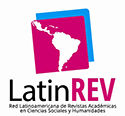Invisibilidad Indígena en el Uruguay: Genética, Historia y Género
Abstract
The Uruguayan population has traditionally been considered "without Indians." After almost 150 years, in 1996 the population began to be questioned about "ethnicity or race", which culminated in the 2011 Census. In this, 2.5% of the population recognized indigenous ancestry as their main ancestry, and 5.1% declared that they had indigenous ancestors. These data are not consistent with those observed when studying maternal or autosomal genetic ancestry (35 and 14% native contribution, respectively.The facts and processes that led to the invisibility of native people and their descendants are analyzed from historical sources, and in particular, their geographical distribution and socioeconomic level. It is also analyzed the gender of those who were integrated into the national society, and the lack of voice of women over a long period, since it was indigenous women that were integrated into the national society.Downloads

Runa, archivos para las ciencias is a publication of the Instituto de Ciencias Antropológicas, Facultad de Filosofía y Letras, Universidad de Buenos Aires and is distributed under a Creative Commons Attribution 4.0 International License.
Runa maintains its commitment to the policies of Open Access to scientific information, considering that both scientific publications and publicly funded research should circulate on the Internet freely, free of charge and without restrictions.
The contents and opinions expressed in published articles are the sole responsibility of their authors.



















